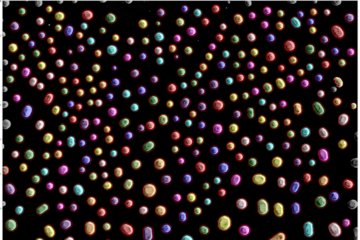All genres
161.
Journal Article
Modifying the nanostructure and the mechanical properties of Mo2BC hard coatings: Influence of substrate temperature during magnetron sputtering. Materials and Design 142, pp. 203 - 211 (2018)
162.
Journal Article
In-situ atomic-scale observation of oxidation and decomposition processes in nanocrystalline alloys. Nature Communications 9, 946, pp. 1 - 9 (2018)
163.
Journal Article
Tetragonal fcc-Fe induced by κ-carbide precipitates: Atomic scale insights from correlative electron microscopy, atom probe tomography, and density functional theory. Physical Review Materials 2, 023804, pp. 1 - 6 (2018)
164.
Journal Article
Overview on micro- and nanomechanical testing: New Insights in Interface Plasticity and Fracture at Small Length Scales. Acta Materialia 142, pp. 248 - 282 (2018)
165.
Journal Article
Microstructure and mechanical properties in the thin film system Cu–Zr. Thin Solid Films 645, pp. 193 - 202 (2018)
166.
Journal Article
Fracture behavior of nanostructured heavily cold drawn pearlitic steel wires before and after annealing. Materials Science and Engineering A: Structural Materials Properties Microstructure and Processing 707, pp. 164 - 171 (2017)
167.
Journal Article
Annealing induced void formation in epitaxial Al thin films on sapphire (α-Al2O3). Acta Materialia 140, pp. 355 - 365 (2017)
168.
Journal Article
In-situ tracking the structural and chemical evolution of nanostructured CuCr alloys. Acta Materialia 138, pp. 42 - 51 (2017)
169.
Journal Article
On the influence of microcantilever pre-crack geometries on the apparent fracture toughness of brittle materials. Acta Materialia 136, pp. 281 - 287 (2017)
170.
Journal Article
Strain rate dependence of the slip transfer through a penetrable high angle grain boundary in copper. Scripta Materialia 138, pp. 88 - 91 (2017)
171.
Journal Article
100 years public–private partnership in metallurgical and materials science research. Materials Today 20 (7), pp. 335 - 337 (2017)
172.
Journal Article
Compressed Bi-crystal micropillars showing a sigmoidal deformation state – A computational study. Materials Science and Engineering A: Structural Materials Properties Microstructure and Processing 700, pp. 168 - 174 (2017)
173.
Journal Article
Microstructural evolution and solid state dewetting of epitaxial Al thin films on sapphire (α-Al2O3). Acta Materialia 133, pp. 356 - 366 (2017)
174.
Journal Article
Electronic structure of metastable bcc Cu–Cr alloy thin films: Comparison of electron energy-loss spectroscopy and first-principles calculations. Ultramicroscopy 178, pp. 96 - 104 (2017)
175.
Journal Article
Dislocation interaction and twinning-induced plasticity in face-centered cubic Fe–Mn–C micro-pillars. Acta Materialia 132, pp. 162 - 173 (2017)
176.
Journal Article
Dislocation-twin boundary interaction in small scale Cu bi-crystals loaded in different crystallographic directions. Acta Materialia 129, pp. 91 - 97 (2017)
177.
Journal Article
Size effect in bi-crystalline micropillars with a penetrable high angle grain boundary. Acta Materialia 129, pp. 312 - 320 (2017)
178.
Journal Article
Entwicklung intermetallischer Eisenaluminid-Legierungen. Stahl und Eisen 137 (5), p. 76 - 76 (2017)
179.
Journal Article
Beam-induced atomic migration at Ag-containing nanofacets at an asymmetric Cu grain boundary. Journal of Materials Research 32 (5), pp. 968 - 982 (2017)
180.
Journal Article
Microcantilever Fracture Testing of Intermetallic Cu3Sn in Lead-Free Solder Interconnects. Journal of Electronic Materials 46 (3), pp. 1607 - 1611 (2017)










